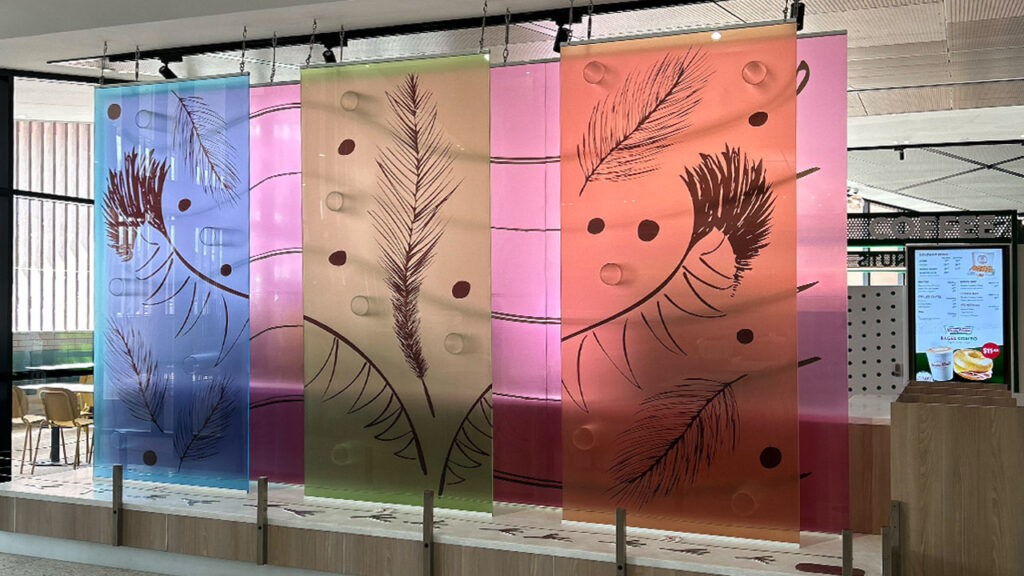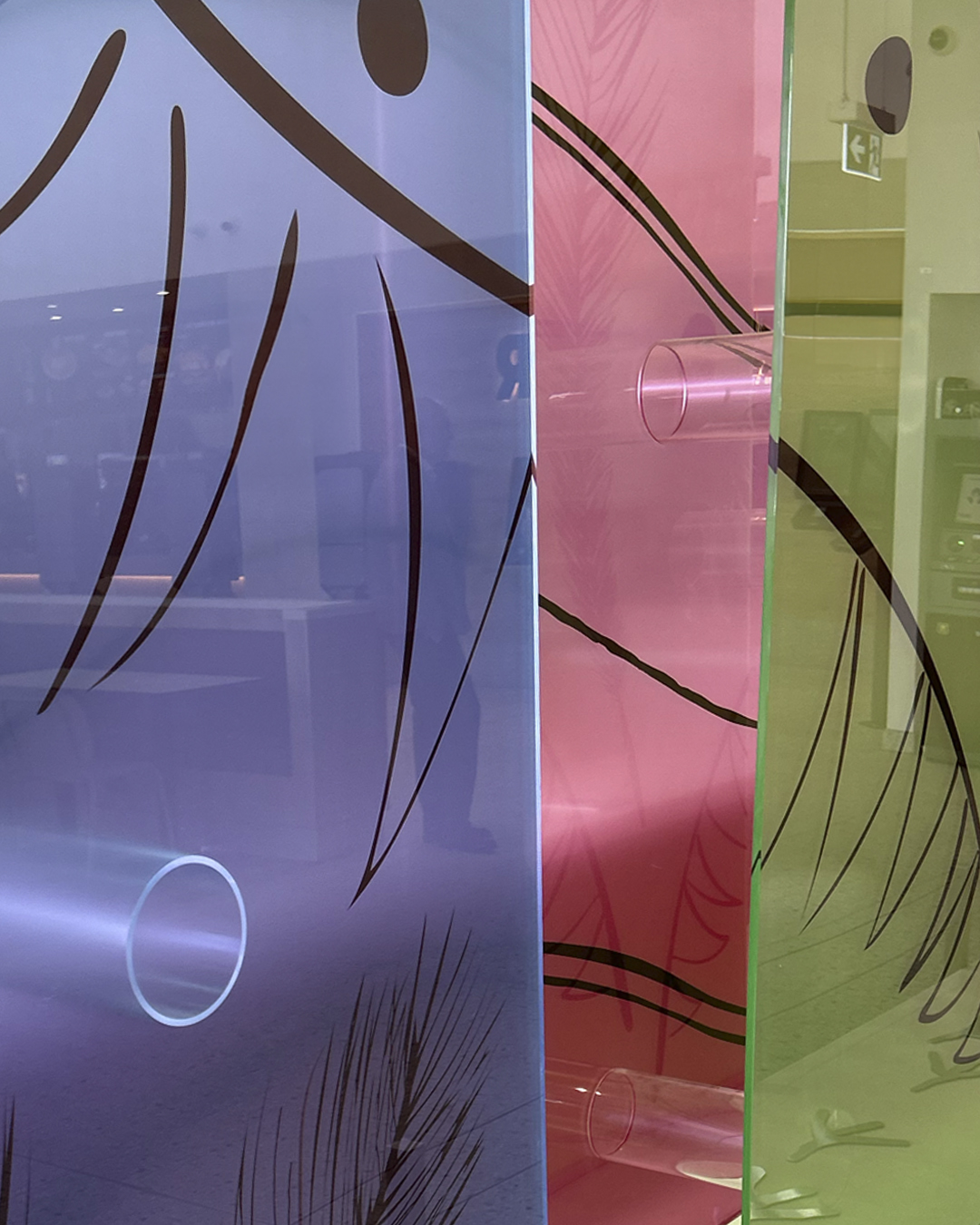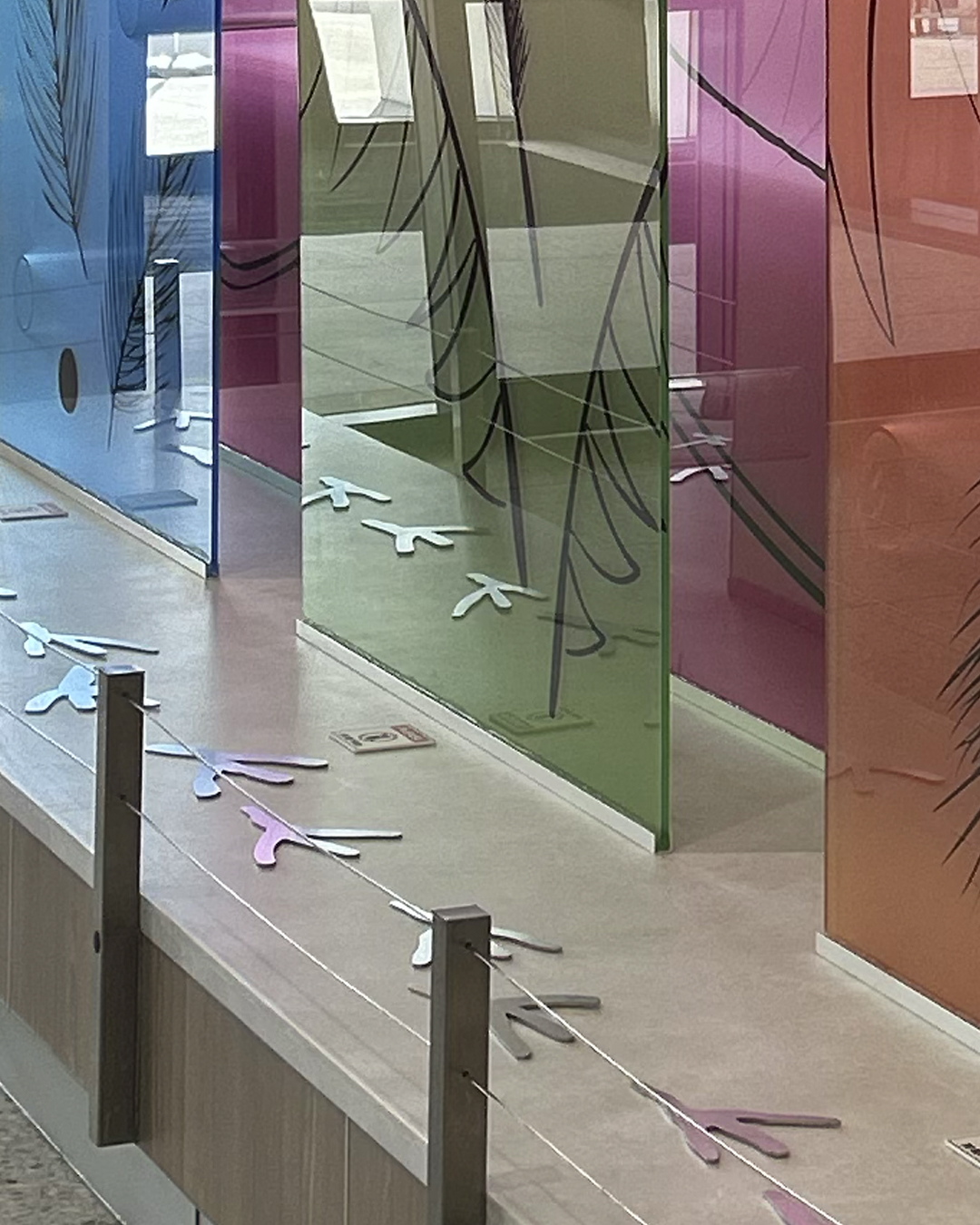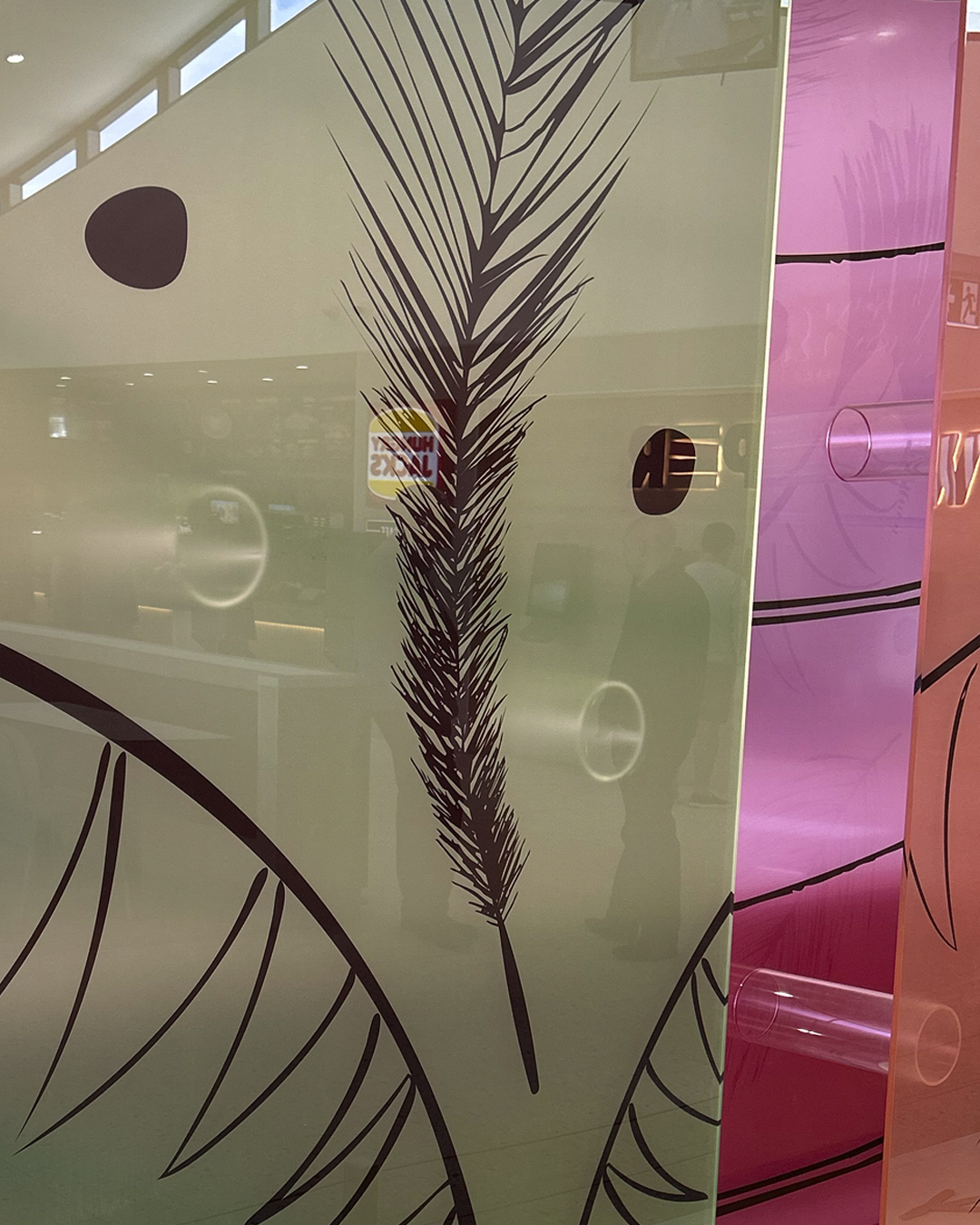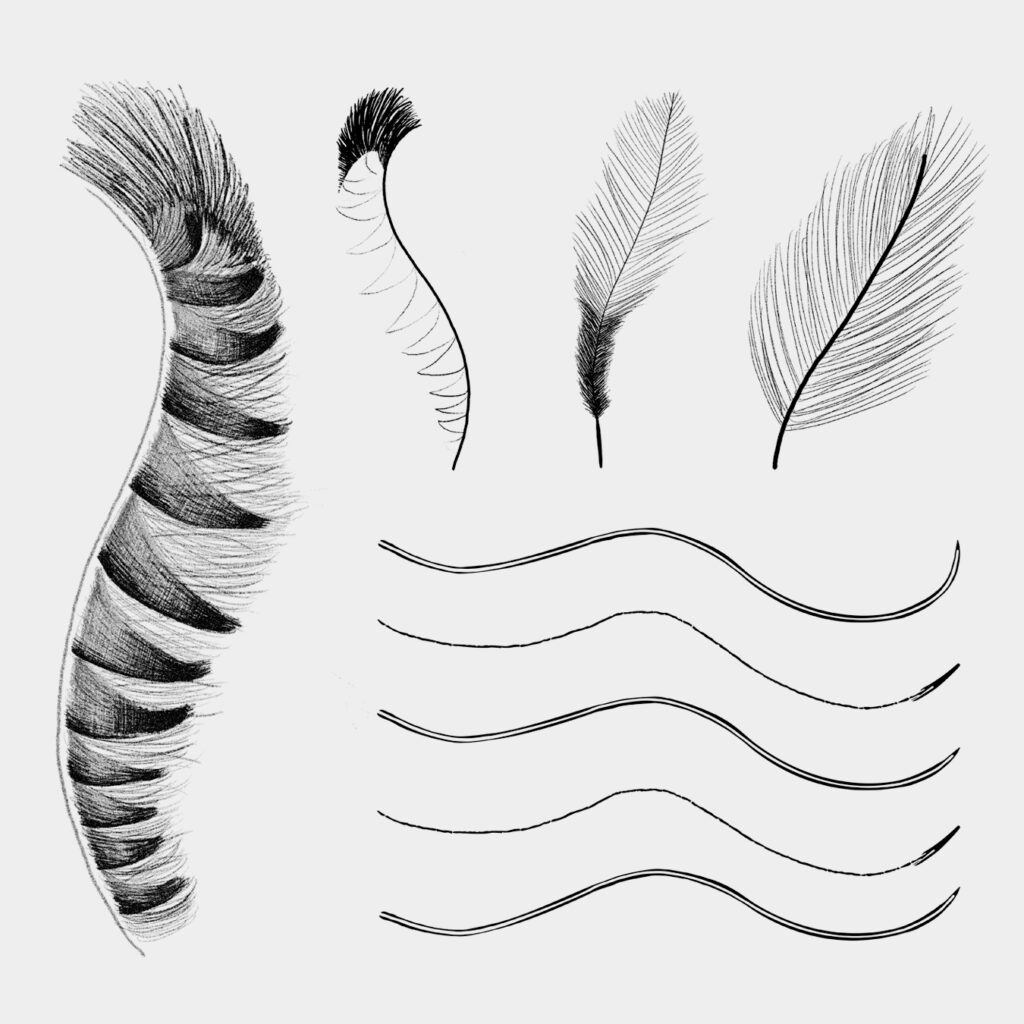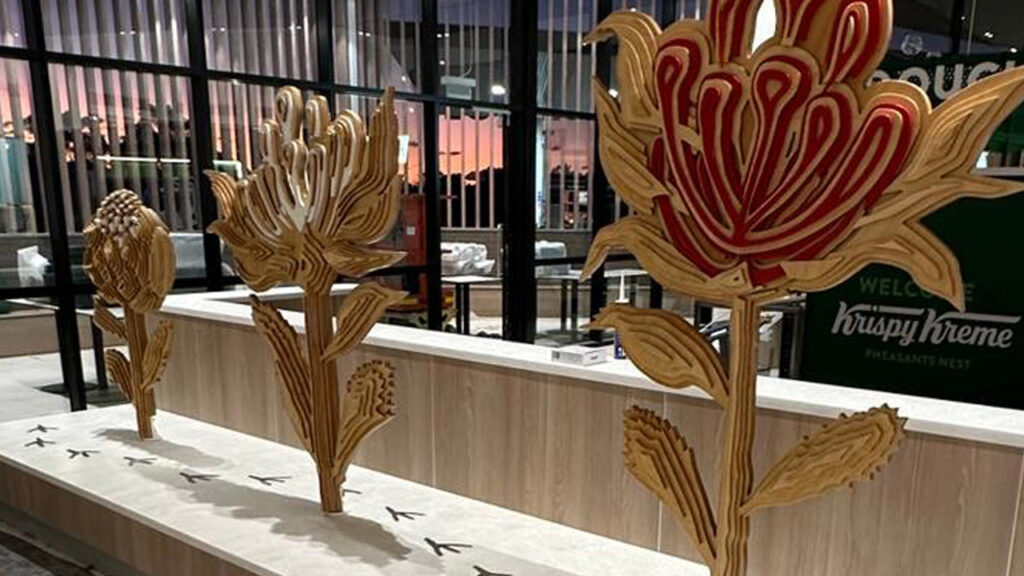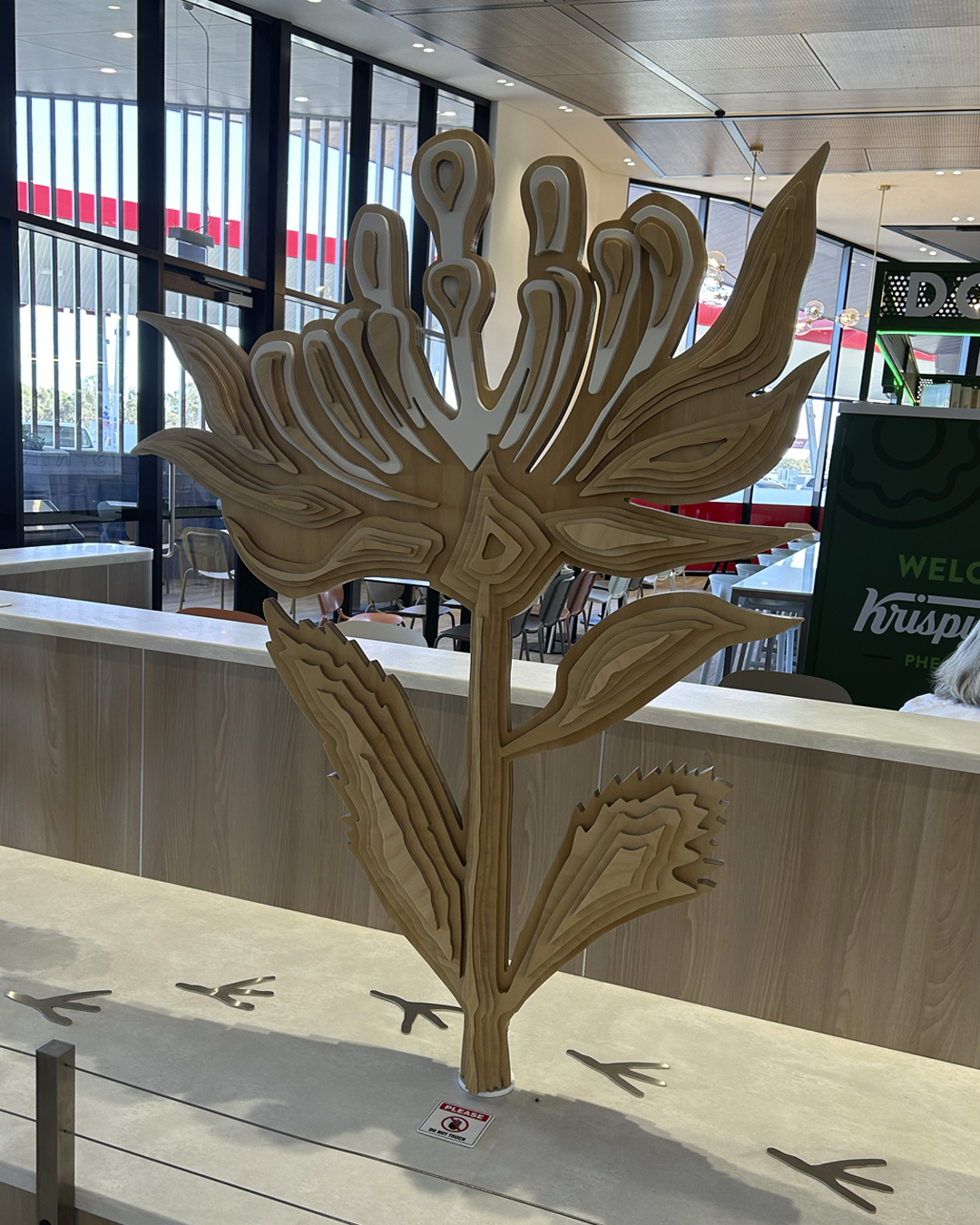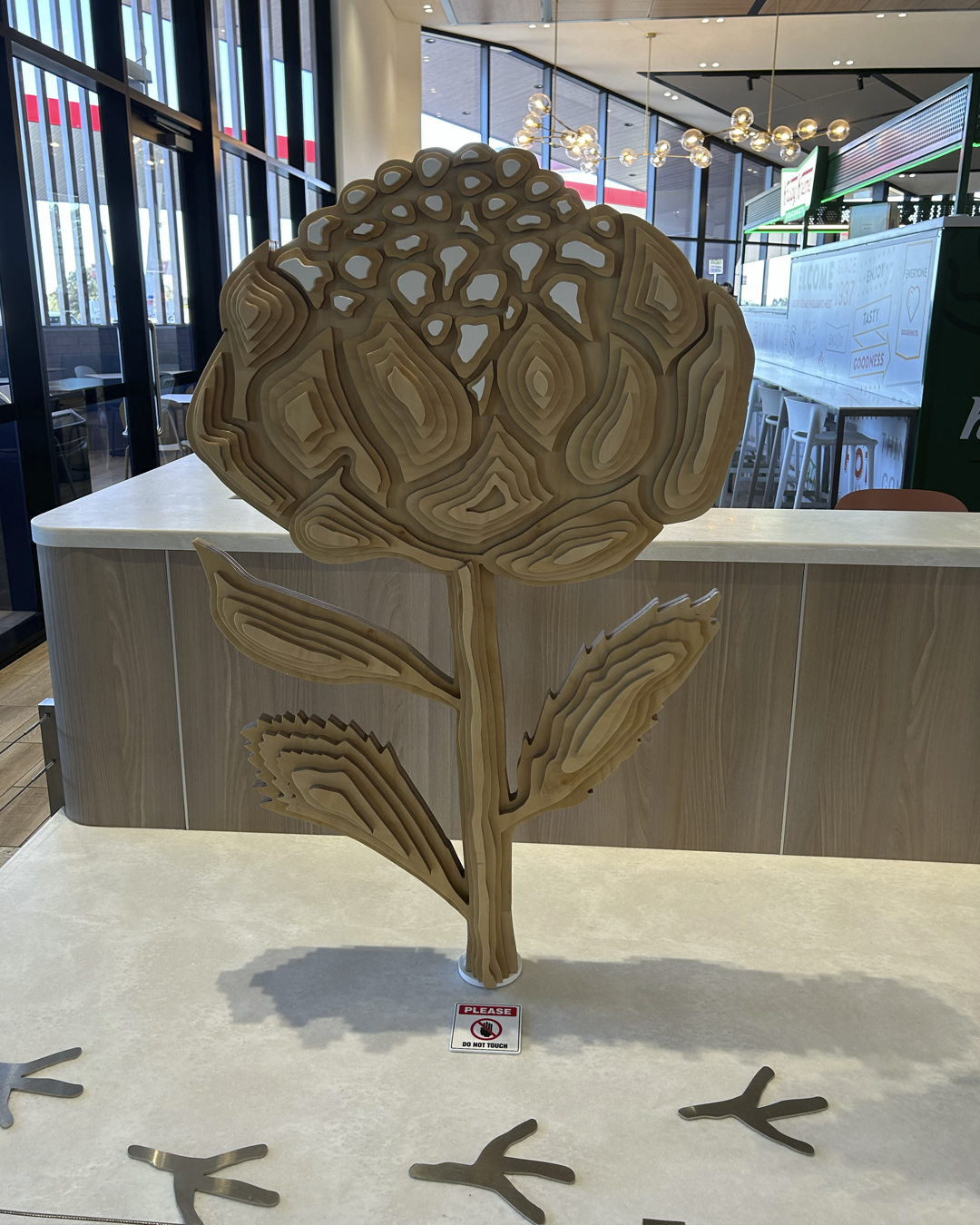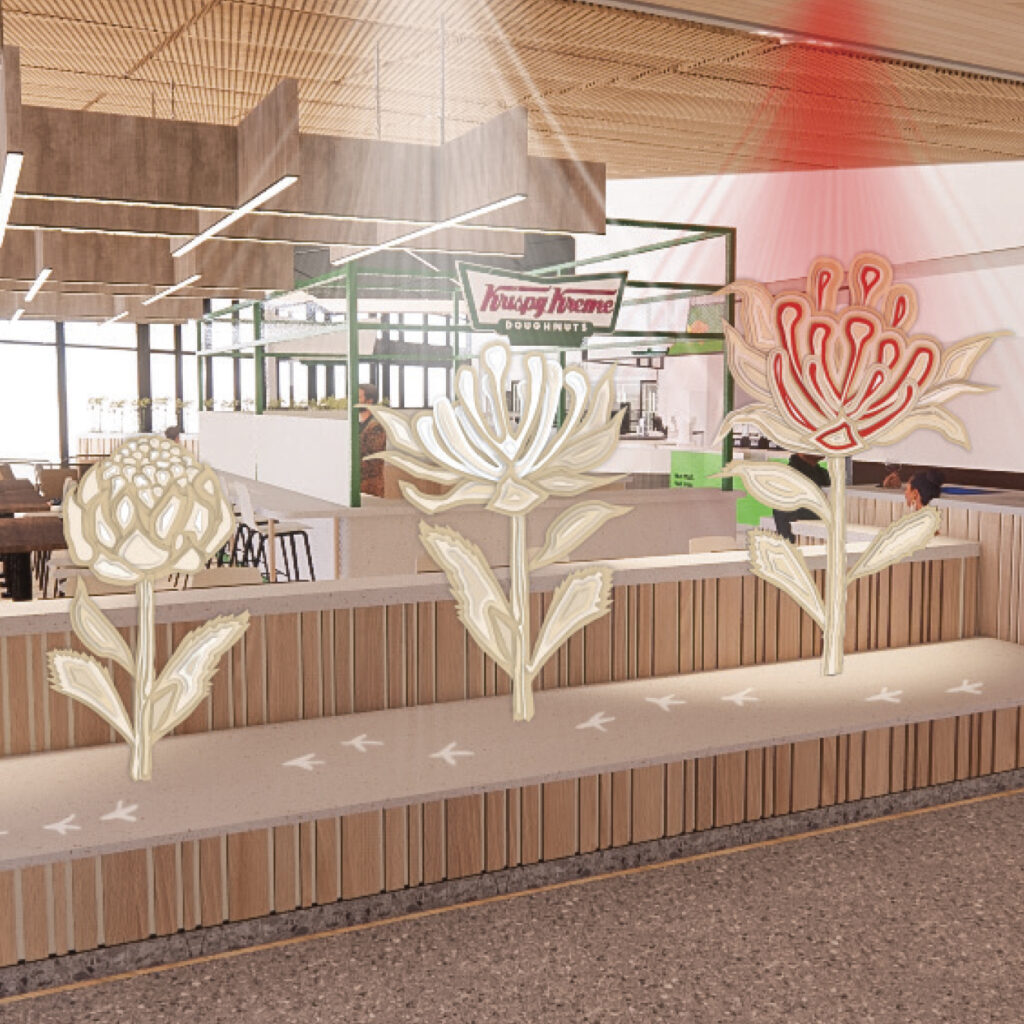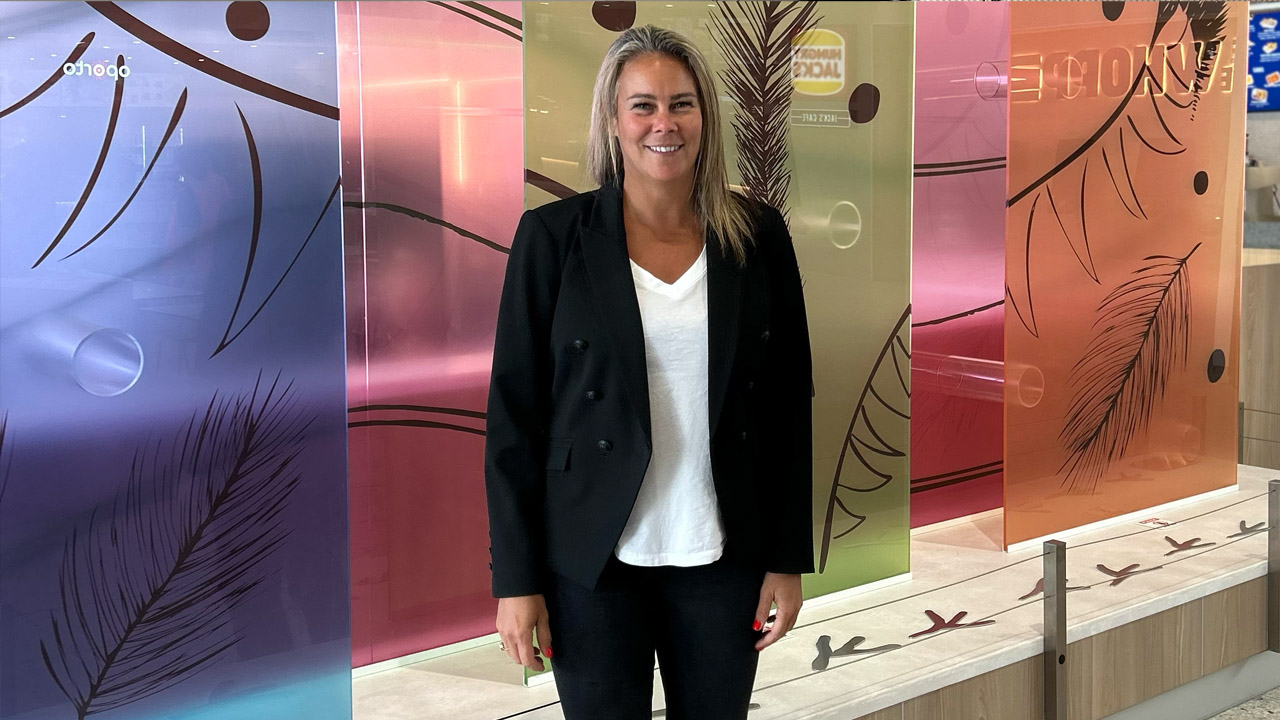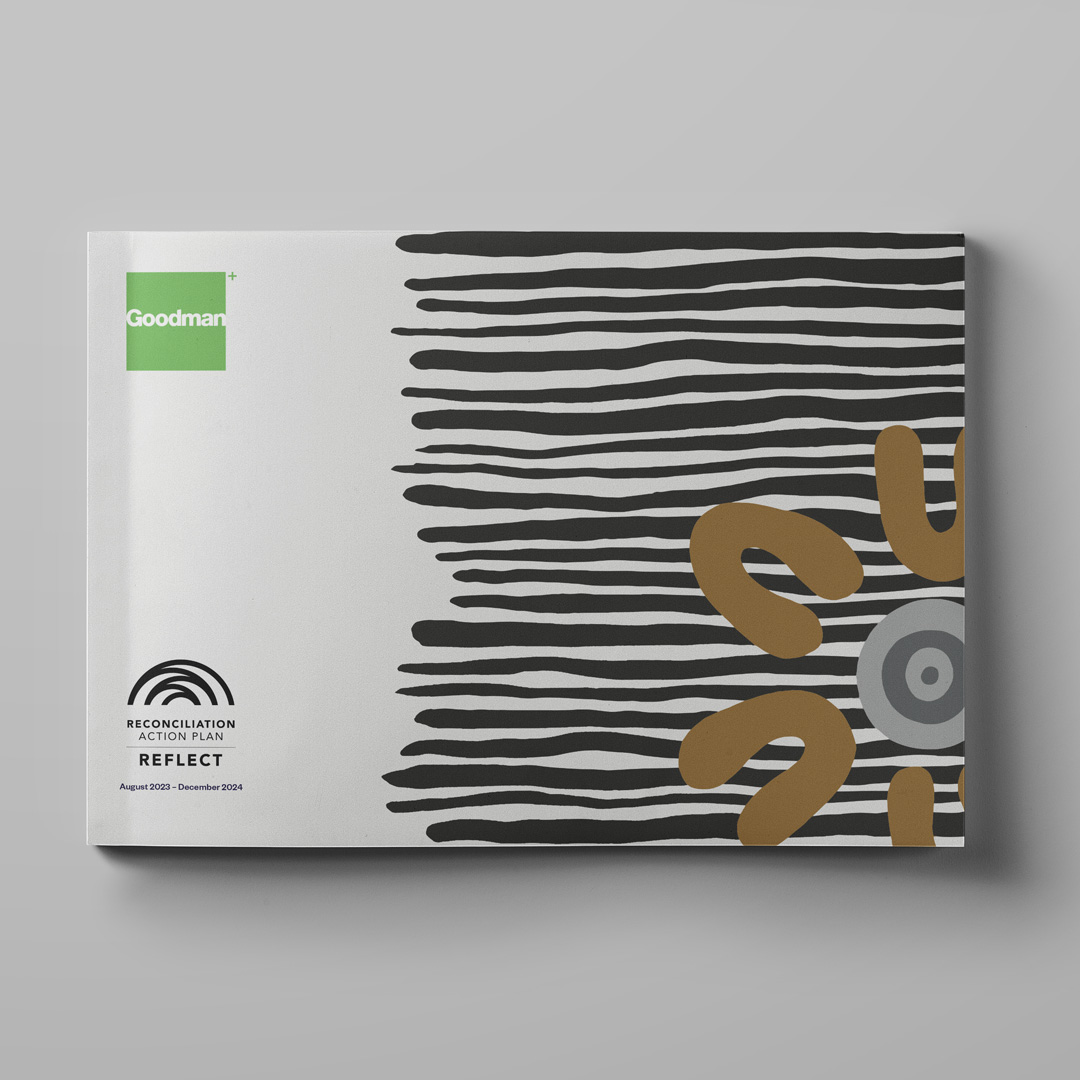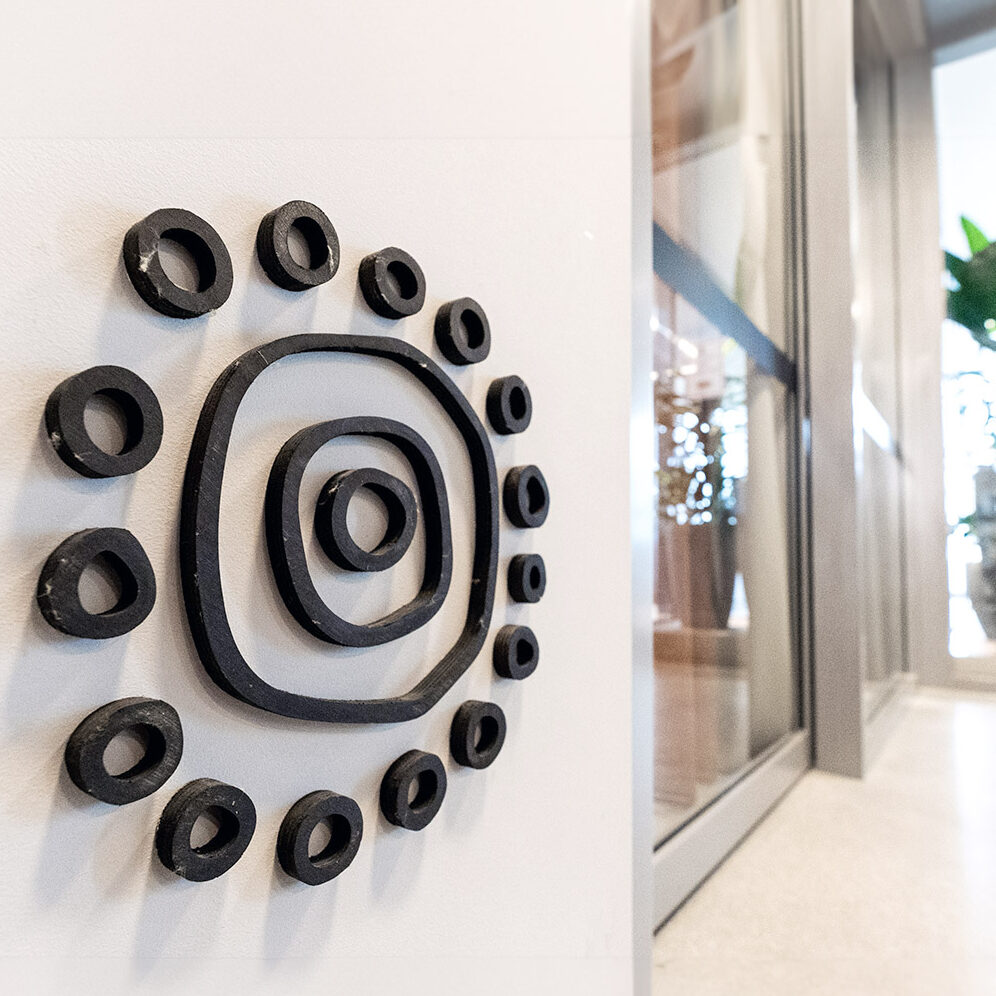Ampol saw the opportunity to work in collaboration with local Dharawal peoples to provide spaces that connect with the Dharawal knowledge and stories, allowing travellers to rest and revive while appreciating local culture.
Balarinji undertook a community engagement process with the Dharawal and local Aboriginal community members to create Designing with Country principles that interpreted the foundational narrative of the site. This outlined three key themes: Acknowledging Country, The Lyrebird and The White Waratah.
Aboriginal artist Danielle Mate was appointed to co-design public art with Balarinji for the service centre. The two Acknowledgement of Country artworks interpret the stories of Wiridjiribin and Mana Gewaan, as shared by Dharawal Elder Glenda Chalker.

